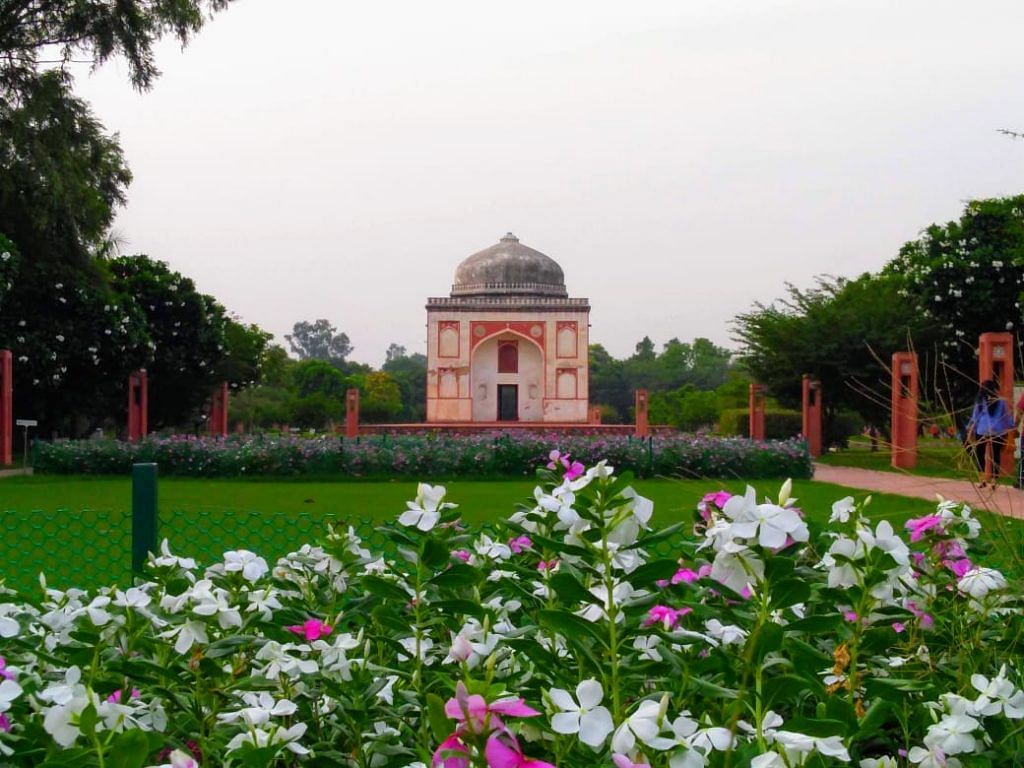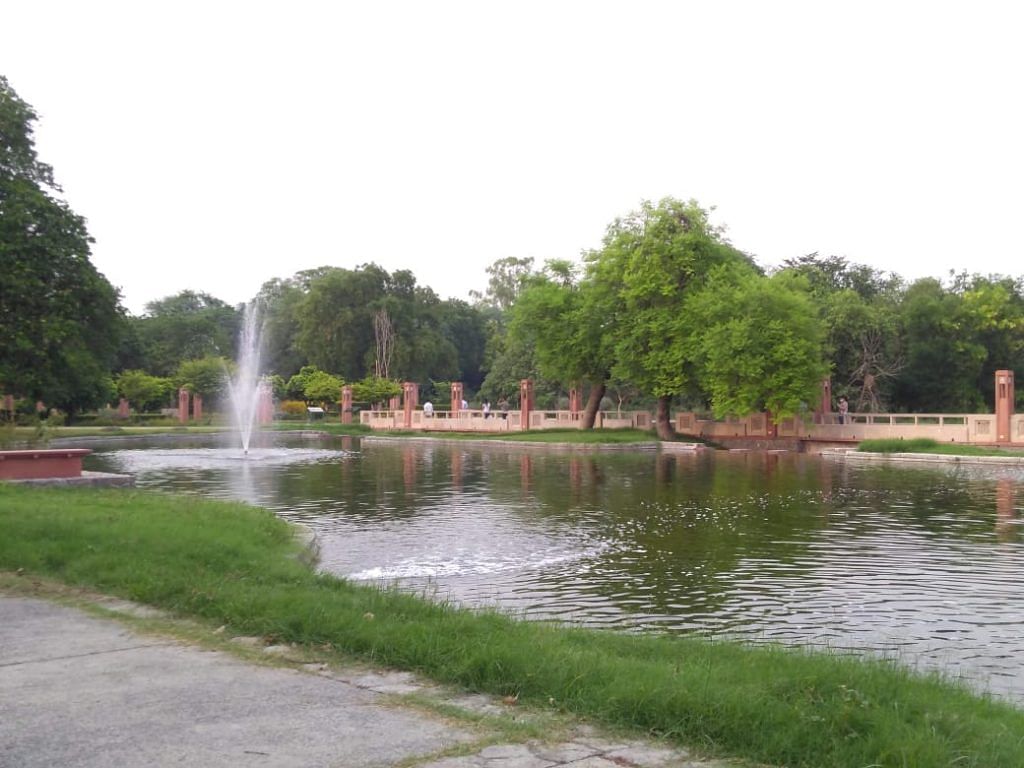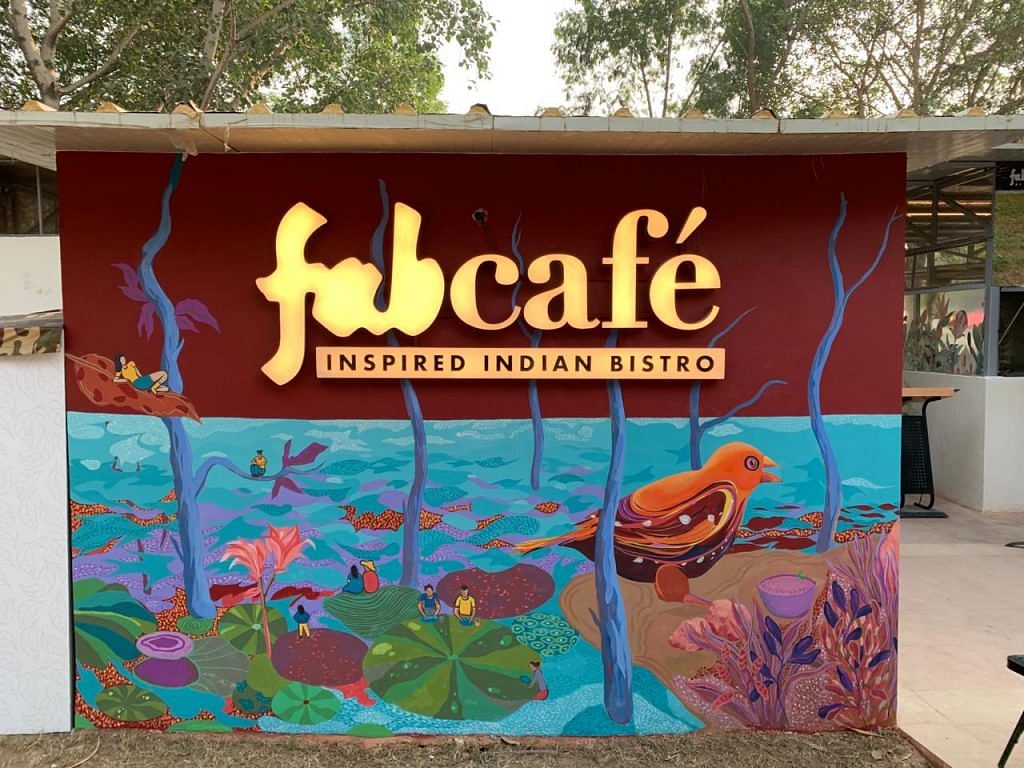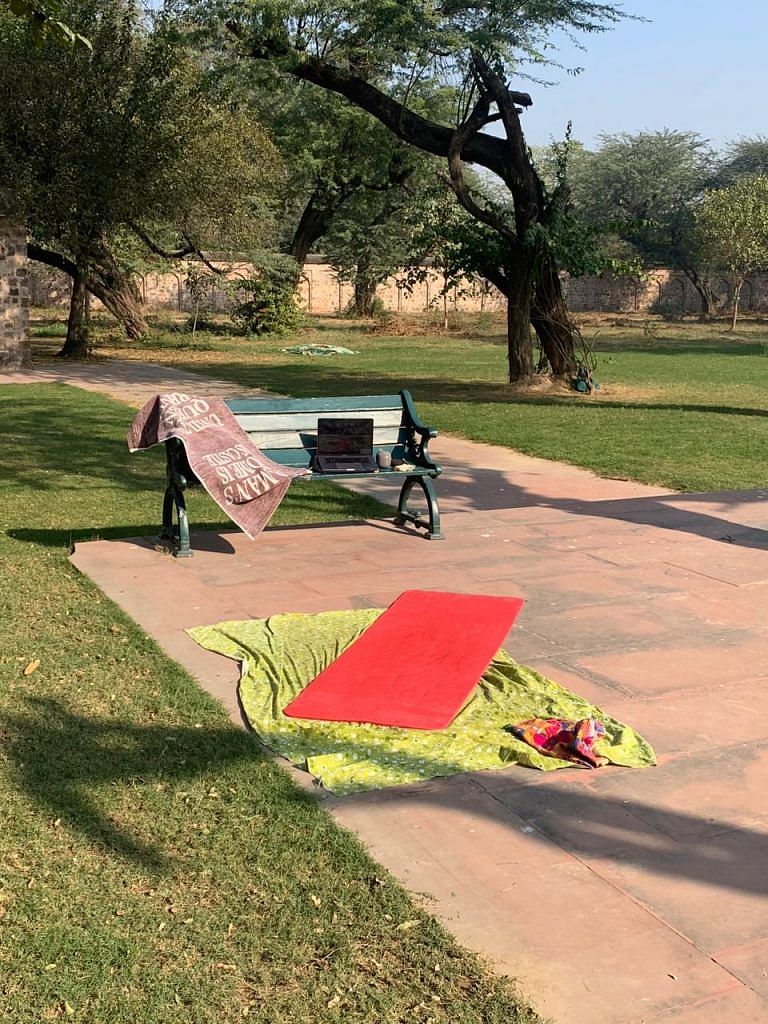Sunder Nursery is teeming these days.
Apart from the rude reality of this year’s coronavirus pandemic, the apocalyptic smog of winter months makes New Delhi collectively choke, groan, and wonder: “Why is it that we live in this city?” Walking around the beautifully manicured Sunder Nursery this season, replete with its weekend organic market, sprawling gardens to practice your lockdown yoga routines, tombs to admire and picnic around, and thriving government-run nursery to purchase plants from, you can’t help but think — this, this is why we love Delhi.
At a time when every government advisory asks us to maintain six feet distance and advocates for open spaces, the renovated and rescued 90-acre park has come as a gift for the capital city. For elites, it has become the new Khan Market, some say.
After months of being cooped up at home and relegated to webinars and web series, the Nursery allows you a space to meet your friends at a safe open-aired distance, and do the occasional celeb-spotting — actors Swara Bhasker and Nimrat Kaur have been seen picnic-ing here in recent weeks, journalist Barkha Dutt is a frequenter of the new lakeside Fab Cafe.
A park to remember
When you think of parks in Delhi, you think of Lodhi Gardens, Nehru Park, or the Deer Park, maybe even the lawns of India Gate. But over the past few years, this backyard of the Humayun’s Tomb complex has emerged as a formidable contender in the capital’s green havens. The beneficiary of more than a decade-long urban renewal undertaking by the Aga Khan Foundation, the gardens have become a hot favourite.
The city’s other favourite green spot, Lodhi Gardens, is mostly populated with either Lutyens’ folk doing serious exercise, or a great many couples — leisurely picnic-ing is not the prime activity like it is in Sunder Nursery.
Originally a park built by the Mughals in the 16th century, called Azim Bagh, and used by the British to grow experimental plants, the developmental collaboration between the Public Works Department, Aga Khan Foundation, and Archaeological Survey of India began in 2008 — in a bid to create a green heritage model for the rest of the city. It was finally opened for the public in 2018, with its stunning landscape plan by Professor M. Shaheer — 20 acres of the compound dedicated to nursery functions, and delicately restored tombs like Sunder Burj, Lakkarwala Burj, and Sunderwala Mehal. It soon earned a spot on Time magazine’s top-100 places to visit.
However, among all the appreciation the park gets for being another jewel in Delhi’s heritage crown, it also gets attention from actual headlines such as this one — “11 Crazy Aesthetic Places Like Sunder Nursery & More To Shoot That Perfect Reels Video At!”.

There has been an undeniable spike of interest in the park over these past few months. From families looking to step out of their homes, young professionals wanting a new place to work remotely, social media influencers looking for new ‘outdoor’ photo backdrops, to ardent bird watchers and horticulture enthusiasts who can scope out the bonsai collection or try their luck spotting the ‘only‘ pink cedar tree in Delhi. And considering this winter is the coldest Delhi has recorded in decades, it’s really no wonder why everyone has flocked here to get a bite of the sun. (The entry fee is just Rs 40 for Indian and SAARC citizens).
From being hailed as the “appu ghar for grown ups”, the new addition to “bucket lists” of things to do, to Twitter users commenting on the “sexual tension between Delhites and Sunder Nursery”, it’s safe to say the internet has noticed the palpable new affinity the city’s residents have towards the park.
Delhi is right now divided into four parts: North Delhi, West Delhi, East Delhi, and Sunder Nursery.
— Sayantan Ghosh (@sayantansunnyg) December 7, 2020
Half of Delhi is in quarantine, the other half at Sunder Nursery. pic.twitter.com/RhHFNmJZie
— Anindita Chatterjee (@CapitalistSage) December 13, 2020
Also read: Temperature checks, sanitisers, social distancing — Delhi monuments welcome back visitors
The new ‘it’ place
A brief walk around, and you start to see it. There are trim girls walking around in their designer leggings, designer sunglasses, designer sneakers, and I-kid-you-not, with their designer dogs. However well-stocked you may be with snacks and a meticulously filled flask of chai, you can’t help eyeing elaborate picnic spreads of others, with the kind of picnic baskets that probably have wine glass-holders and meals consisting of fancy cheeses, fruits, and packed lunches from trendy burger joints like Burgerama. There are people rolling into the park, and heading straight for brunch at Fab Café, which opened in November this year. And then of course, much like Khan market, there is the clamour for parking space thanks to the deluge of cars. Never before have I witnessed traffic to get in and out of a park.
There is definitely a strong whiff of the capital’s bourgeoisie style. As one of Delhi’s most prolific bloggers, Mayank Austen Soofi, wrote last month, “…Sunder Nursery has emerged as a theatre to witness the domestic manners of Delhi’s super-rich—only they can afford full-time maids and nannies to accompany them in their walks and picnics.”
But the comparison to Khan market, Delhi’s famous refugee market-turned-elitist outpost, originally made in a tweet by Delhi-based policy professional Richa Bansal, is not meant to be a jibe but, in fact, a positive observation.
Sunder Nursery seems to be the new Khan Market.
— Richa Bansal (@rbansal79) December 5, 2020
“The way you would earlier catch up with friends in Khan, you now do in Sunder Nursery,” she says, explaining that people are anxious about socialising at indoor restaurants, and would rather lay out their dhurries under the winter sun, especially after the recent Covid spike in the capital. “Earlier you’d go to Perch, now parks have become the new go-to zones.”
Bansal dismisses the idea that the park has been gentrified, admitting that there is a visibly “Khan-type crowd” now, but it is by no means any sort of takeover — the park is still very much open to and inhabited by all kinds of people.

Also read: Up-close: The new-look Sunder Nursery, a world heritage site Delhi had forgotten
Delhi-based artist, Tarini Sethi, also agrees that Sunder Nursery still enjoys a democratic spirit, compared to the expensive Khan market, which caters to only a “specific type of person”. Apart from now regularly meeting friends over picnics — “we WhatsApp all the time, but somehow even when we’re sitting at different ends of a blanket with masks on, we still have so much to say” — she is also a regular at the Earth Collective farmer’s market in the Nursery. Having been visiting it since the time it was held in her colony in Asiad Village, she vouches for how it offers cheeses, honey, and everything you’d get in a fancy European farmer’s market, fresh veggies you’ve never seen before, and also affordable vegetarian food options available for around Rs 100.
In Sunder Nursery since last year, Earth Collective is the brainchild of plant-based chef Meenu Nageshwaran, who has been running organic markets since 2015. Curated as a lifestyle market, Meenu explains how the Sunday market at Sunder Nursery offers everything from seasonal produce to artisanal products, with visitors including everyone from “serious health food shoppers” to people who just come by to scope the market out, eat, and have fun in the sun. She has noticed that after the Covid-induced lockdown, people have become even more aware of eating healthy. “When we reopened on 6 September, there were about 1,000 people who showed up,” she says, explaining that the five-hour duration of the market on weekends ensures there are never too many people at once, but yet they have extended them to Saturdays as well to cut the market in half and ensure social distancing.
View this post on Instagram
For Meenu, the Earth Collective’s aim to be a space free of aggressive marketing, single-use plastic, or refined ingredients, with a drive to promote eco-friendly cutlery and packaging, has set the tone for a certain kind of culture in Sunder Nursery.
A culture has indeed been set, as can be seen with the recent opening of Fab Cafe, the Fabindia chain’s offering to the fast-growing health-food sector. Promoting ‘Indian food with a twist’, the Cafe is also built around the concept of conscious eating, with no refined sugars or oils, offering eco-friendly packaging in which you can take away your meals to sit and enjoy anywhere in the massive park.

The big draw, of course, is its stunning lakeside location that they have tried to bring more attention to by roping in young artists Atia and Tan Sen, and Yen Sukhramani, to create a lively mural at the entrance. The artists, who go by the moniker ‘Senyensen‘, were contacted by the Cafe via Instagram. They describe their 10-day painting experience as one of the best projects they’ve done so far, being bang in the middle of nature and history, having kids and dogs poke around to see what they were up to, and spotting exotic birds like a grey hornbill while they finished the mural. Their final artwork is a culmination of all Sunder Nursery has to offer: trees, monuments, animals, the lake, the communal culture of eating, all rendered in a skewed perspective, which makes all the bits of nature far bigger than all the humans and manmade elements — just like how it should be.
Also read: The Delhi prof who said tombs & mosques were not just ‘Muslim’, but ‘Indian Muslim’
Idyllic cocoon
Apart from the generic praise most people have for the manicured prettiness of Sunder Nursery, most women I spoke to had one common thing to say — there is the absence of “shady characters”, the park feels safe. As someone who was accosted by a drunk man in broad daylight in Delhi’s Mehrauli Archaeological Park earlier this year, I can personally attest to how women in India don’t get to safely take up public space the way they’d like to.
Years ago, during a stroll in Bangalore’s centrally-located Cubbon Park, I tried to do what feminist activist Jasmeen Patheja had been urging women to try out in her ‘Meet to Sleep’ interventions — take a nap in a public park. It was a fairly busy weekday afternoon, I chose an occupied, but not overtly crowded corner, kept my belongings close, and attempted to doze off, the way I had seen other men routinely do in the park. I could not. I felt too conscious of my body, too aware of all the stories I had heard of women being stalked, flashed at, and groped, regardless of what time of the day they were in the park, and who they were with. So, if women say they feel relatively safer in Sunder Nursery, as opposed to other public places the city has to offer, it surely does mean something.

An urban city is only as good as the public spaces its residents can blissfully inhabit. Mumbai has its sea-facing promenades in Bandstand and Worli, Bangalore has Lalbagh Botanical Gardens and Cubbon Park, and Kolkata has Rabindra Sarobar and Maidan. If your city has enough spaces where the elderly can sit and reminisce, couples can canoodle, exercise junkies can get a good stretch, children can run amok, and aunties can partake in brisk walk-cum-gossip sessions, then it’s a city worth living in.
Views are personal.






